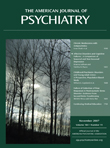Scientific advances in neurobiology make this an exciting time to be treating anxiety disorders. Fundamental brain mechanisms underlying anxiety are being traced, allowing us to base treatment on real insight into what happens in patients’ brains when anxiety engulfs their lives. Applying scientific breakthroughs at the clinical level to help patients understand the neural mechanisms underlying their anxiety is profoundly exciting, especially when scientific insights can help patients engage in challenging treatments, accept resisted medications, or discover cognitive tools to cool internal flames. Bringing that exciting, translational experience to clinicians not already steeped in neuroscience is the laudatory goal of The Anxious Brain . The authors rightfully tell us that neuroscientific information carries power as a clinical tool—explaining, motivating, and shaping treatment, reducing stigma, and enhancing rational leverage in the battle against the irrational forces that destroy anxious patients’ lives. The authors set out to make that tool widely accessible to psychotherapists treating anxiety. Unfortunately, the book falters a bit in its delivery. To successfully tap the healing power of knowledge, that knowledge must rest on a solid scientific foundation, but the foundation provided here is shaky. Simplifying to enhance accessibility has its value; oversimplifying and overreaching to tell a story not truly grounded in science undermines the scientific credibility of our field. This book fails to do justice to basic neuroscience—presenting as fact claims that go far beyond available data and are often just plain wrong and recommending treatments that are not grounded in clinical science—and it barely mentions the vast literature on clinical trials that provides the empirical foundation for modern psychotherapeutic approaches to anxiety. Making neuroscience accessible to psychotherapists is a noble cause, but knowledge-based improvement of clinical care requires a better integration of solid neuroscience with empirically based guidelines for effective treatments.
The book’s first two chapters, which describe the anxious brain, are a commendable effort to make the brain comprehensible to non-neuroscientists, covering the basics and providing useful, easy-to-follow diagrams. However, the text repeatedly becomes simplistic, goes beyond the data, and draws inappropriate conclusions. Similar problems plague the chapters on panic disorder, generalized anxiety disorder, and social anxiety disorder. Examples are numerous, but one that stands out is the idea that panic is a seizure-like discharge emanating from the basal ganglia. Another example is the proposal that “people with too many [corticotropin-releasing factor] neurons make mountains out of every molehill” (p. 62). It is unclear why obsessive-compulsive disorder and posttraumatic stress disorder have been totally ignored, as they are the disorders which we may be closest to understanding in a neural sense. The chapter on neurotransmitters is useful and the concept of neurotransmitter balance is important. But simplistic notions, such as the notion that high levels of norepinephrine are “correlated with generalized anxiety” (p. 47) and that low levels of norepinephrine can “cause lethargy...as…seen in depression” (p. 48), support popularized views that are so oversimplified they may impede understanding.
Later chapters on treatment for anxiety disorders contain clinical wisdom and some good advice. However, the text consistently deviates from empirically based treatment guidelines, such as those published by APA. The authors repeatedly endorse treatment approaches without empirical foundation. For example, many pages are devoted to traditional diaphragmatic breathing exercises for the management of panic disorder, but there is little empirical data to support its added value in this context. Furthermore, eye movement desensitization and reprocessing (EMDR) is touted as valuable treatment for anxiety disorders, even though it has not been well studied, was originally developed for the treatment of posttraumatic stress disorder, and already has data that suggest inefficacy for panic disorder. Separate chapters on medication for anxiety disorders also contain much useful wisdom, but they too are insufficiently grounded in the literature. A table that purports to connect etiologies to symptoms and medication choices is rather misleading but is repeated in each chapter.
Perhaps the authors constructed this book by culling from neuroscience those ideas that resonated with their own clinical experience. There is clinical wisdom to be found here, but the science they chose to extract from the vast literature seems arbitrary and is used to support pre-existing perspectives, providing little real help to readers who want to continue using the endless stream of emerging science to shape and refine their own treatment approaches. To the degree that readers will better understand the potential clinical utility of neuroscience and will be drawn to investigate further, the book provides value. If the book’s mistakes and weaknesses inspire neuroscientists to do a better job of making their work accessible and translatable into clinical relevance, then this also is a contribution. Spreading the word about neuroscientific advances and their ability to inform and enhance clinical care is profoundly important. However, it is a disservice to science and ideal clinical care to cloak personal perspectives in the garb of neuroscience, with such little recognition of the empirical and clinical foundation that is the ultimate arbiter of what we promote as treatment for specific psychiatric disorders. That, to us, is the greatest failing of this book.

